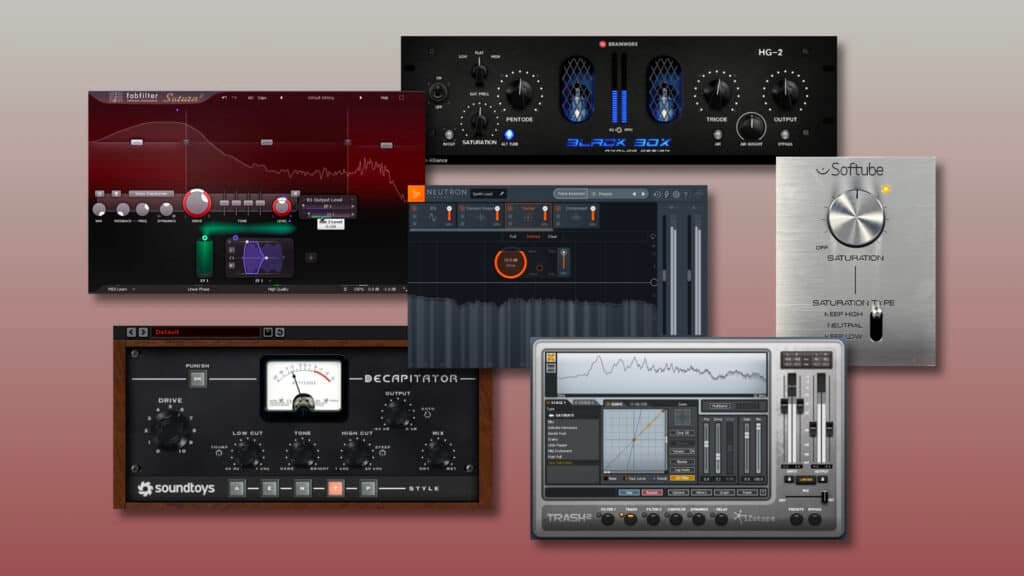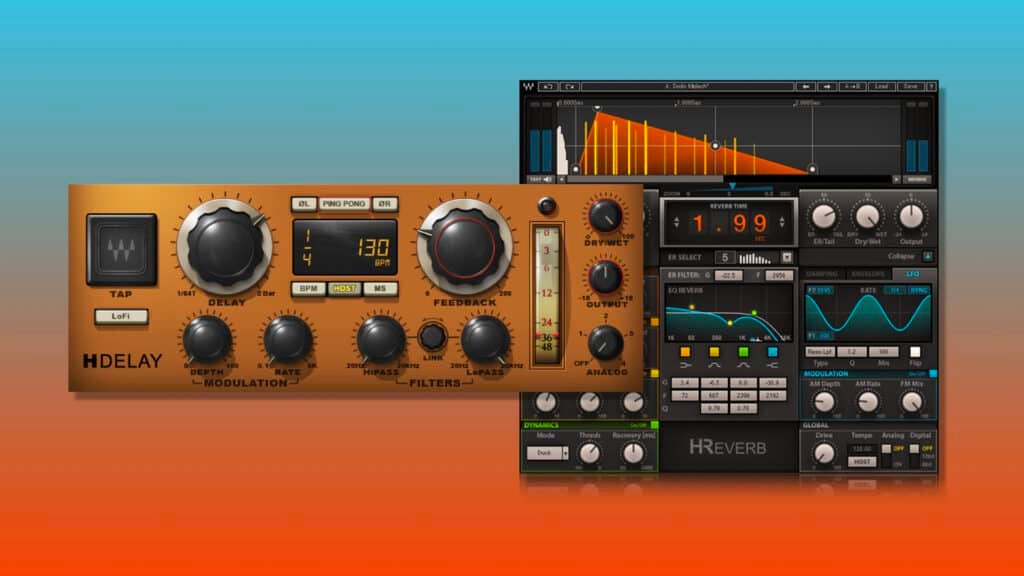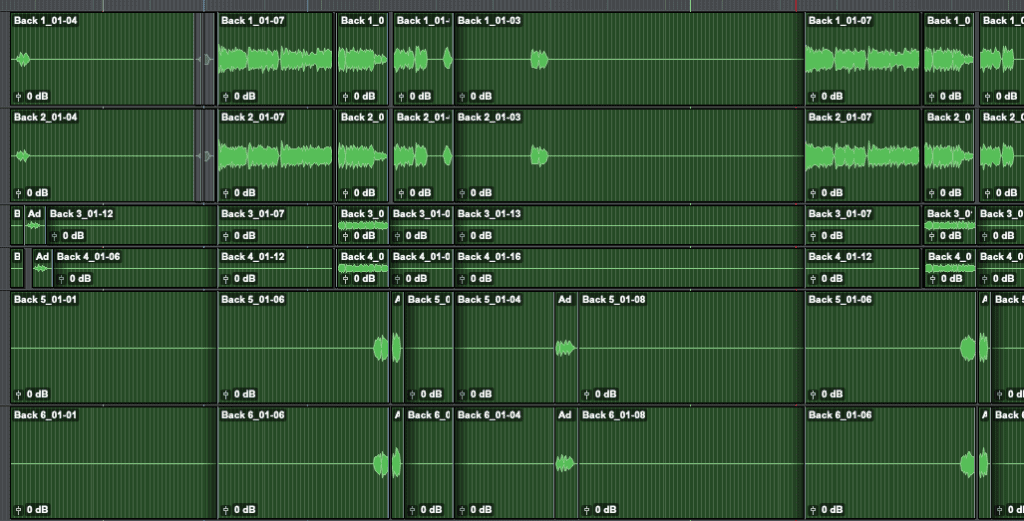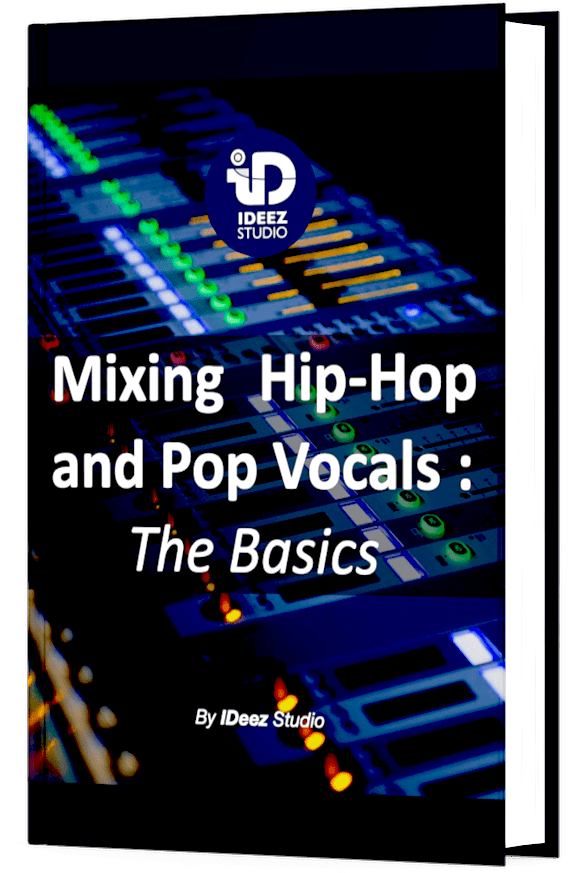
Vocals are the most important parts of any great pop song, and the way in which you mix your vocals can have an impact on the success of your track. In this guide, we’ll take you through our step-by-step process on how to achieve radio-ready pop vocals like the pros.
1. Comp and Edit

Before you get into the fun part of mixing, it’s important to go through the mundane process most producers and engineers loathe — comping and editing.
Comping is pretty standard in pop mixing these days. The technique entails taking the best parts of multiple vocal takes and stitching them together to create a single, perfect vocal recording. Some producers will stitch certain words and phrases together, while others go as far as comping syllable by syllable.
There’s no need to go overboard here, as the goal is to simply get a single lead vocal track that sounds as best as it can.
Once you comped your vocal take, go through and edit out any strange breaths or unwanted noises that you don’t want in the final mix.

2. Tune Your Vocals

Our ears have become accustomed to hearing pitch-perfect vocals, which is why tuning is such an essential step in pop production. The approach you take to tuning will depend on the vocalist’s skill level and the style of the song.
For a skilled singer in a softer, more organic track, subtle tuning might be all you need to keep things sounding polished without losing the natural feel.
In most cases, I recommend using tuning sparingly. Just enough to smooth out any imperfections while maintaining the vocal’s authenticity. However, in genres like trap, EDM, and others, tuning can go beyond correction and be used as a creative effect.

3. Don’t Mix In Solo

Many beginner engineers make the mistake of mixing their vocals in solo. However, doing so can cause one to lose perspective of the bigger picture.
Spending a lot of time trying to mix any element in solo is hugely counterproductive. It’s almost like spending an hour trying to find the perfect sauce without having a main dish to put it on. You could find a sauce that tastes incredible on its own, though when paired with your steak or chicken, it may not fit.
In the same way, when you mix your vocals in solo, you may be able to get a solid sound, though when placed in the context of the entire mix, they may sound out of place.
The only time I would suggest treating your vocals in solo is when you’re using something like a parametric EQ to remove harsh or resonant frequencies.

4. Use Volume or Clip Gain Automation

Volume automation is the secret weapon of many great mixing engineers, as it allows them to dial in even, natural-sounding vocals before compressing them.
In most pop songs, vocal intensity can vary from section to section. A singer might sing lower in the range during the verse and move up to a high belt in the chorus.
When you don’t treat those volume inconsistencies, you’re left with an overly dynamic vocal that either gets swallowed up in the mix or pokes out in a harsh, unsettling way.
With volume automation, we can normalize the dynamics from section to section and create a consistent lead vocal.
While there are plenty of great plugins you can use for this process, such as Waves Vocal Rider, I often like to take a manual approach, carefully listening to a song phrase by phrase and identifying words that are noticeably louder or softer than others.
Once you’ve identified the issues, you can either automate the volume of the track or adjust the clip gain on particular words or phrases.
As an added benefit, vocal automation helps level vocals before compression so that your compressors don’t have to work as hard to control their dynamics. The result is upfront yet natural-sounding lead vocals.

5. Add Character with Saturation

One of my favorite tools for mixing just about anything is saturation.
Back in the days of old, vocals received natural saturation from running through preamps in the console and microphone, as well as the analog tape they were sent to during the recording and mixing process.
Nowadays, most vocals are recorded into digital audio workstations through audio interfaces that were made for clean and transparent recordings. While transparency can be a benefit in many ways, it comes with the cost of character.
To get the best of both worlds, engineers will often use saturation plugins to get that same, for lack of a better word, vibe.
Saturation can be used in many ways, whether subtly to help vocals feel more present in a mix or prominently to get the unmistakable sound of overdrive or distortion. Whenever I’m mixing Pop vocals, I tend to use tape saturation, as it has a gentle compression effect that doesn’t sound too obvious unless pushed hard.
If you really want to get creative with your saturation and use it as an effect, place it on an aux channel and send your vocal to it for parallel processing. This technique allows you to dial in a much more effected sound and subtly mix it in with your core lead vocal.
One of my absolute favorite saturation plugins for locals is Soudtoys Decapitator. You can use it to dial in some pretty gnarly, high-gain distortion sounds or use the onboard Mix knob to maintain the cleanliness of your lead vocals with parallel saturation.

6. EQ in a Pop Context

While every vocal will require a different EQ treatment, as all voices are unique, there are a few EQ moves I find myself making in just about every top mix.
For starters, I recommend using a high pass filter to get rid of some unnecessary sub-frequencies. Almost anything found beneath 80-100Hz in a vocal, whether male or female, will be useless noise that’ll only clash with any other low-end mix elements.
Depending on how the vocal was recorded, I often like to sculpt the sound in the low-mids between 100 and 400Hz. If the vocals are too boomy, I’ll make a small dip here, though if they can use some more fullness and work, I’ll give them a slight boost in this range.
In dense pop mixes, you’ll find a lot of energy in this range, most of which isn’t intended for the vocal. Just be careful not to cut too much, as you could end up making your vocal sound thin.
From there, I often like to add a 10+kHz boost with a high-shelf to give my vocals some sparkle. If doing so brings out the ‘S’s’ and other sibilant vowels, don’t worry, as we’ll address that soon.
My biggest suggestion is not to follow ultra-specific EQ advice found on the internet. Nine times out of ten, any exact numbers or frequency adjustments won’t work for your vocal. Always use your ears and try to be conservative so you don’t ruin the natural integrity of the vocal recording (unless that’s your intention).
Looking for a professional sound engineer specializing in pop and hip-hop music ? You’re in the right place! Mixing, mastering, production, editing,… we’ve got it all covered!
Let’s start now!
7. Use dynamic EQ

If you want even more control over your vocal EQ, I recommend getting your hands on a dynamic EQ plugin. The beauty of dynamic EQ is that it adapts to changes in frequencies in real time.
For example, you might only get boomy low end on certain syllables and phrases, so if you cut that frequency region with a static EQ, you risk thinning out the vocal in places where that frequency range sounds fine.
One of my most used dynamic EQ plugins is Waves F6, though I’ve recently started using the dynamic function on FabFilter Pro-Q3, which I also enjoy quite a bit.
8. Get Rid of Sibilance

Sibilance—those sharp “s” sounds—can be a real challenge when it comes to mixing pop vocals. To manage this, we use a process called de-essing.
What is De-essing?
De-essing is the process of reducing or eliminating excessive sibilance in vocal recordings. It targets specific frequency ranges (usually from around 5-10kHz) where sibilance occurs and reduces their intensity when these harsh consonants occur.
It’s a good idea to minimize sibilance during the recording process if you can. You can do this by positioning the microphone slightly off-axis, using a pop filter, or guiding the singer to adjust their technique if it’s feeling too sibilant.
However, even with these precautions, unwanted sibilance can still appear, and that’s where having a de-esser plugin comes in handy.
While there are hundreds of de-esser plugins out there, most of them work the same way.
You’ll usually start by identifying the problem frequencies where sibilance occurs. From there, you’ll set the threshold so it activates only when the sibilance is prominent. While listening to the mix, adjust the threshold to control the sibilance without affecting the natural quality of the vocals.
One of the main signs of an amateur mix is too much de-essing. Over-de-essing can make vocals sound unnatural as if the singer has a lisp. The goal is to subtly reduce sibilance to maintain a natural sound.
While the stock de-esser in your DAW should do just fine, there are some plugins that are easier to use and more transparent that I’d recommend checking out, including:

9. Don’t Be Afraid To Heavy Compression

The human voice is one of the most dynamic instruments. Unfortunately, it’s this dynamic range that can be such a challenge to manage in a mix, especially in pop music, where consistency is key.
In pop music, compressors help ensure that every word and nuance is clearly heard. By smoothing out the loud and soft parts, you can help your vocals sit perfectly in the mix, achieving that polished, professional sound.
When it comes to settings for pop vocals, I typically prefer fast attack and release settings. A fast attack helps catch transient peaks immediately, preventing any sudden loud spikes. In contrast, a fast release allows the compressor to recover quickly, maintaining the natural flow and energy of the performance.
Using Serial Compression
Instead of relying on a single compressor to do all the work, I usually like to use multiple compressors in sequence to get a more transparent and controlled sound.
This technique is known as “serial compression”, and the idea is that each compressor can handle a different aspect of the dynamics. The result is a smoother and more natural compression.
For instance, one compressor might handle peak control while another shapes the overall dynamics.
Many engineers love the classic 1176 and LA2A compressor combination. The 1176, with its fast attack and release, tames the peaks, while the LA2A, known for its smooth and warm compression, adds body and sustain.

10. Add Space With Reverb and Delay

It’s hard to get vocals to sit in a mix if they don’t have space around them, especially in busy pop mixes.
This is where reverb and delay plugins come into play. They add that necessary depth that pop vocals call for, making them feel like they’re in a room rather than just floating on top of the music.
Many pop vocals are actually sent through multiple reverb and delay plugins to achieve that perfect sound. However, it’s really easy to go overboard with reverb. Too much, and your vocals can end up sounding distant and washed out, losing that all-important focus.
The trick is to create a space where the vocals still feel upfront and clear, even as they sit within the mix. You want them to shine through with just enough ambiance to feel full and dynamic, without getting lost.
Unfortunately, there’s no one-size-fits-all approach to reverb and delay. Every mix is unique and might require different settings. However, here are a few tips to get you started:
Reverb Tips
Start Small. Use a shorter reverb time (e.g., 1-2 seconds) to keep vocals tight and present. Then you can apply a high-pass filter on the reverb to remove low frequencies and avoid muddiness or use the Abbey Road reverb trick.
Whe it’s done, add a bit of pre-delay (10-30ms) to separate the reverb from the initial vocal. Consider using plate reverb for a bright, smooth sound that complements pop vocals.
Delay Tips
Use it in a Subtle Way.Use a short delay (e.g., 50-100ms) for a subtle thickening effect. Experiment with ping-pong delay for a wide, stereo effect that adds dimension.
Don’t forget to sync your delay to the song’s tempo for a rhythmic, polished feel.Finally, consider sidechaining the delay to the vocal to keep the delay in the background, allowing the main vocal to stay prominent.
Looking for a professional sound engineer specializing in pop and hip-hop music ? You’re in the right place! Mixing, mastering, production, editing,… we’ve got it all covered!
Let’s start now!
11. Stacks on Stacks on Stacks

Layering vocals is one of the best ways to achieve that rich, full pop sound. If you’re involved in the recording process, double tracking your vocals is the way to go.
The key, however, is not to just double track for the sake of it. Be intentional. For example, double track the chorus to add power or emphasize certain lines for extra impact.
When you do double track, think about panning. Spread the backing vocals out across the stereo field to create width and space, but keep the main vocal front and center. This helps the listener feel enveloped by the sound without losing focus on the lead vocal.
Your BGVs should be treated differently in the mix. You want them to complement, not compete with, the main vocal. Pan them wider or push them back in the mix to give the lead vocal the spotlight it deserves.
And if you’re not part of the recording process? No worries! You can still achieve that layered effect using a doubler plugin. It’s a great tool to add width and dimension without the need for extra takes.
Conclusion
The more you practice mixing pop vocals, the better you’ll become! Of course, while having the tips and knowledge above is a great start, it won’t make a difference unless you dive in and start applying what you’ve learned!
So, fire up your DAW, experiment with these techniques, and let your pop creativity flow! And if you have any questions on vocal mixing or anything in the field of music production, please contact us, and we’ll be happy to help you.
Related Articles:
My favorite tools for mixing pop and hip-hop music:
Plugins
In the field of auto-tune, I’m convinced that nothing’s better and more efficient than Antares Auto-Tune Pro. As for the EQ’s, FabFilter Pro-Q3 and Slate Digital Infinity EQ are, in my opinion, the best tools. For compression, I have 2 favorites plugins: Waves RComp and UAD EL8 Distressor.
As for reverb, I’m a big fan of the Soundtoys Little Plate, but generally, I go for the Valhalla VintageVerb for its versatility. I also love the Arturia Rev PLATE-140 and the UAD Pure Plate for its organic side.
Headphones
The closed headphones I love and will always love using for mixing pop and hip-hop music are the Beyerdynamic DT-770. As for the best open-back headphones, I use the Sennheiser HD600 headphones, and I’m really happy of them!
Monitors
Having a pair of Yamaha HS7 in its studio or home studio is always cool for more excitement while listening to your mixes. The Adam Audio T7V monitors are also super accurate. In my studio, I also have a pair of Genelec 8030 for their reliability.
Hardware gear
For anyone who wants to start using hardware in their mixes, I always recommend these 2 units from Klark Teknik: the EQP-KT and the 76-KT. Don’t forget to use good converters, such as the Apollo interfaces. This is essential for a good rendering.






